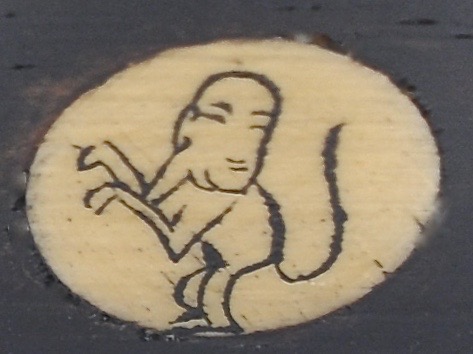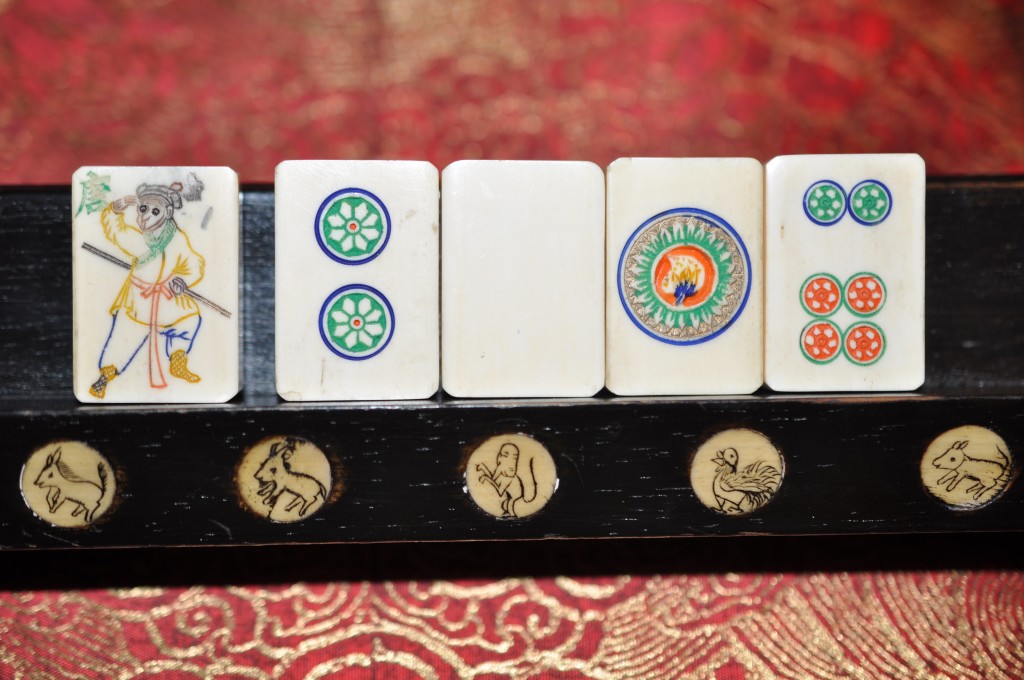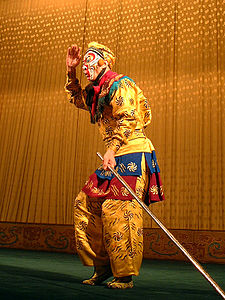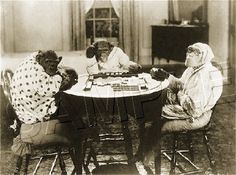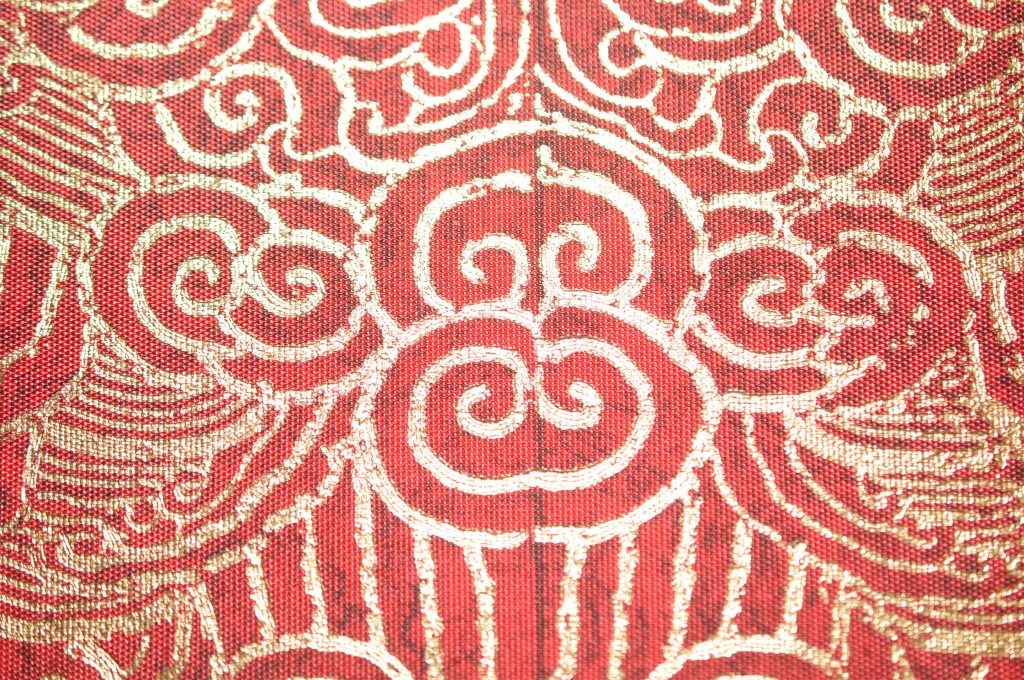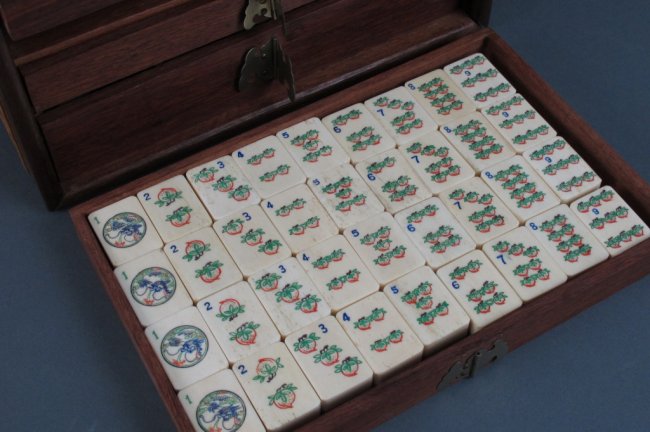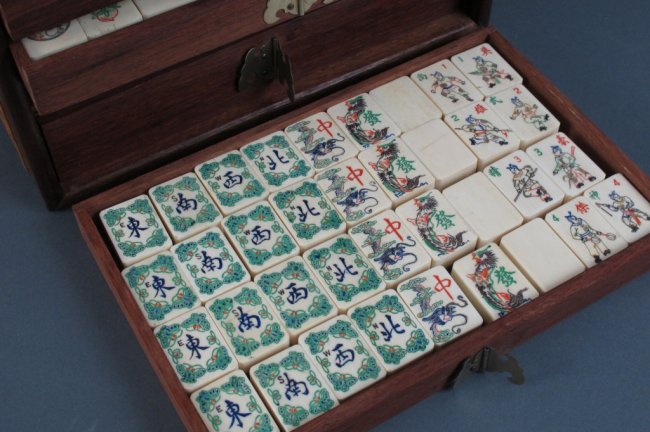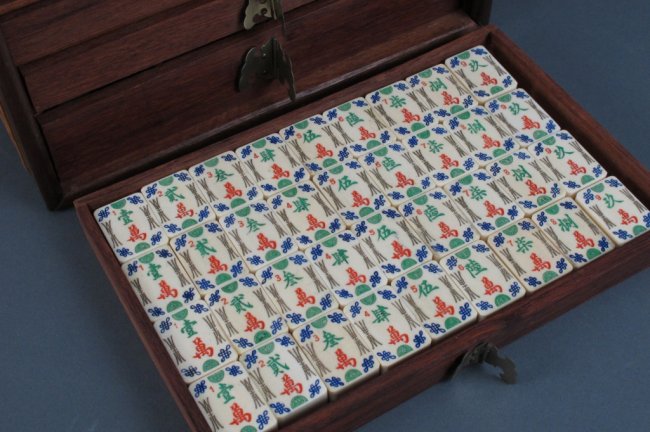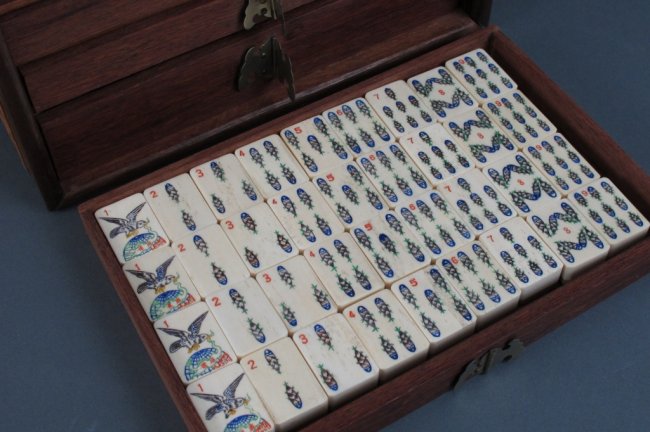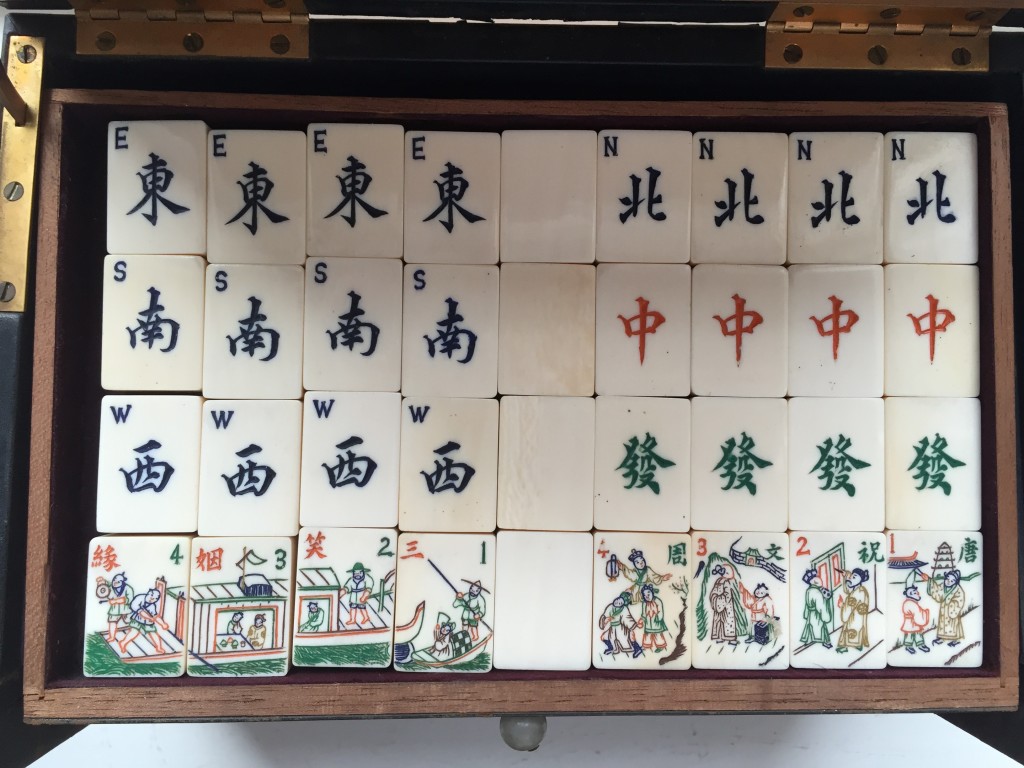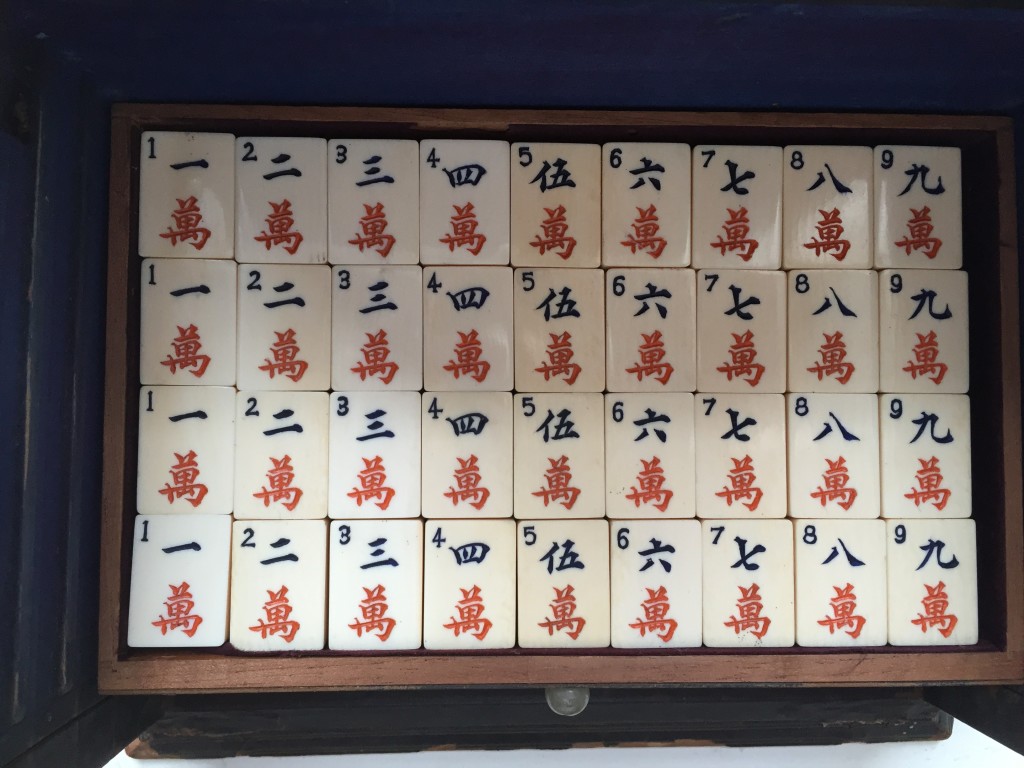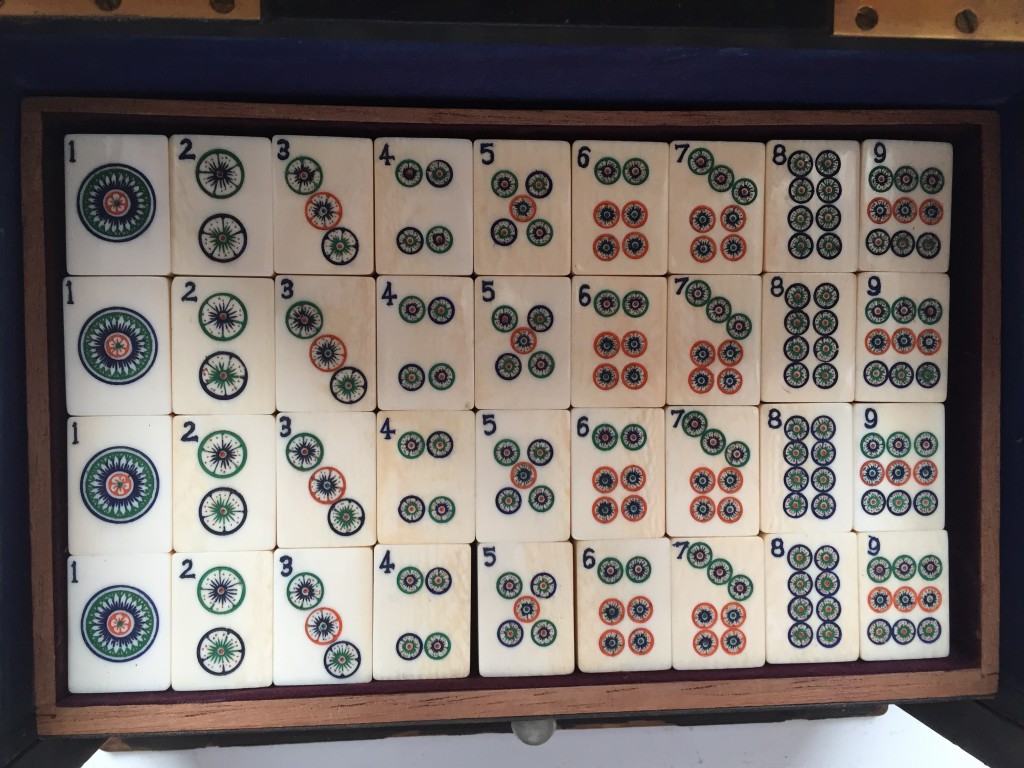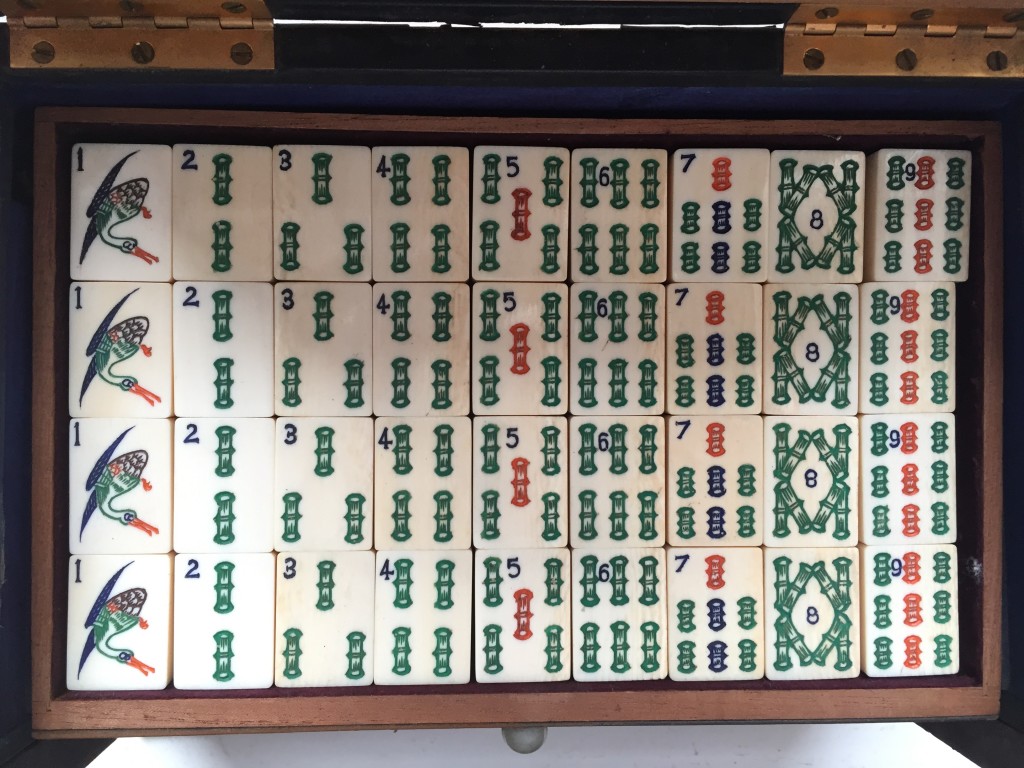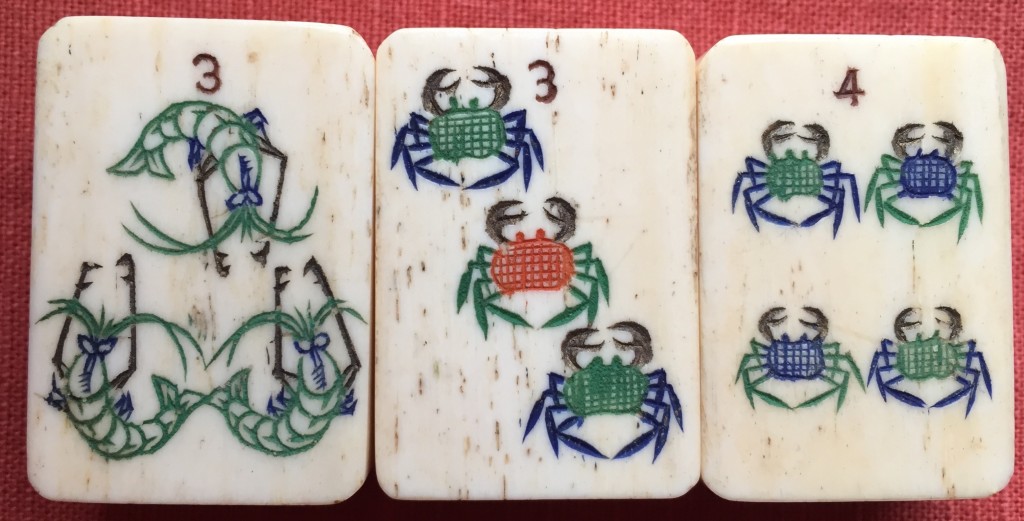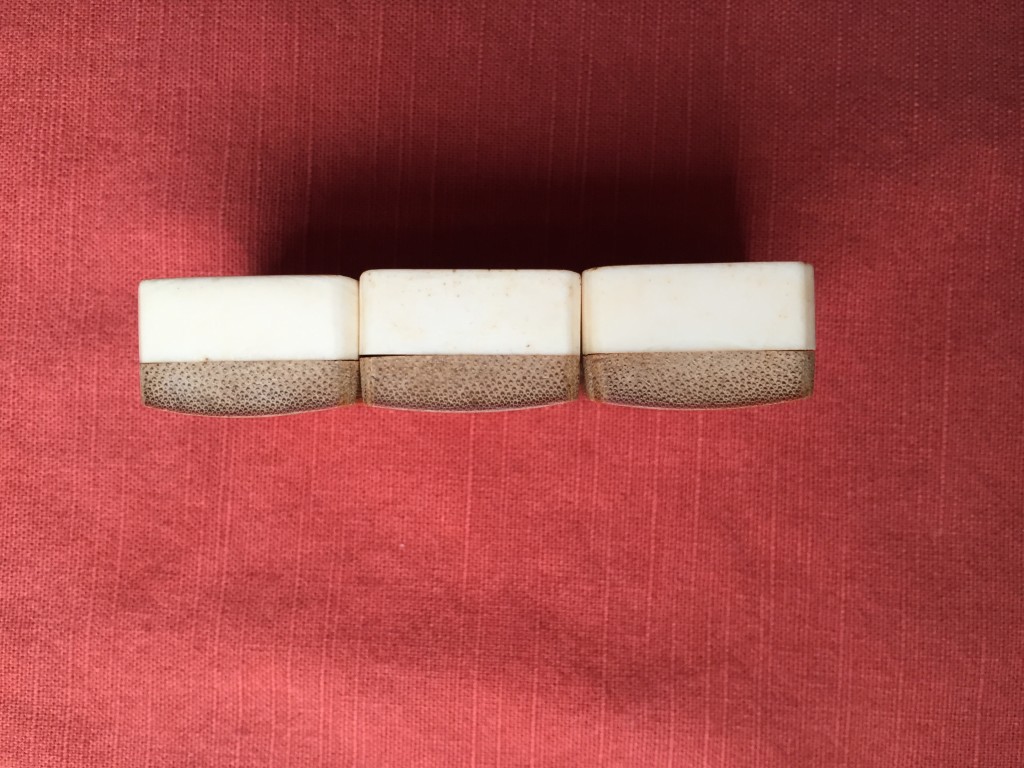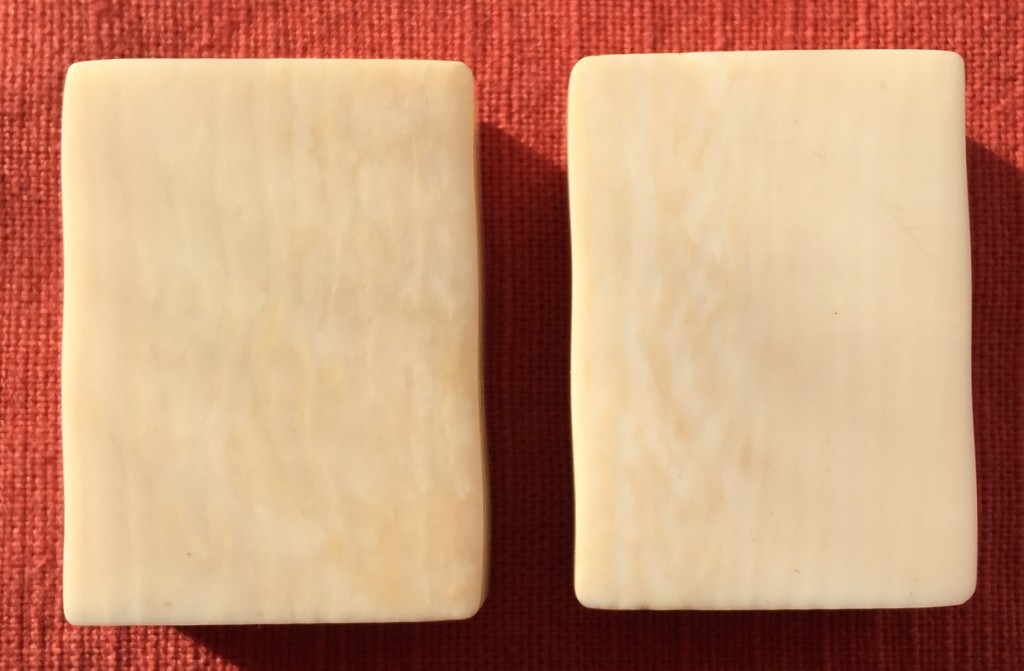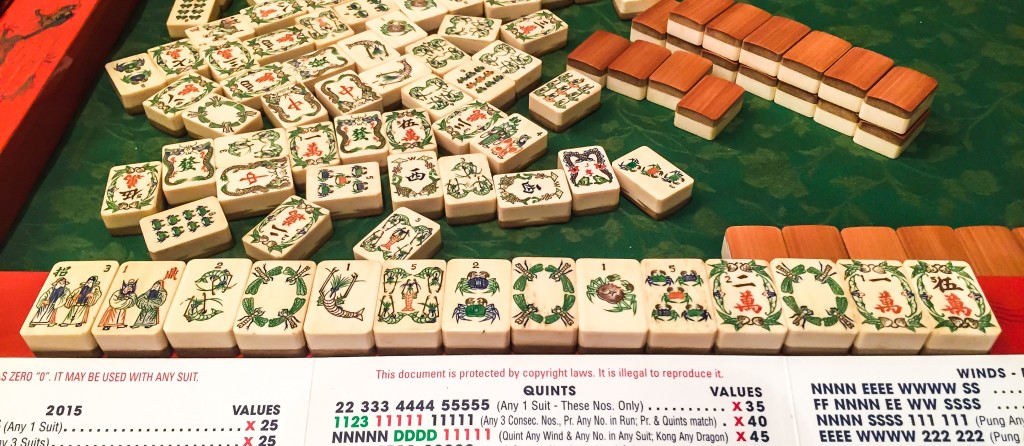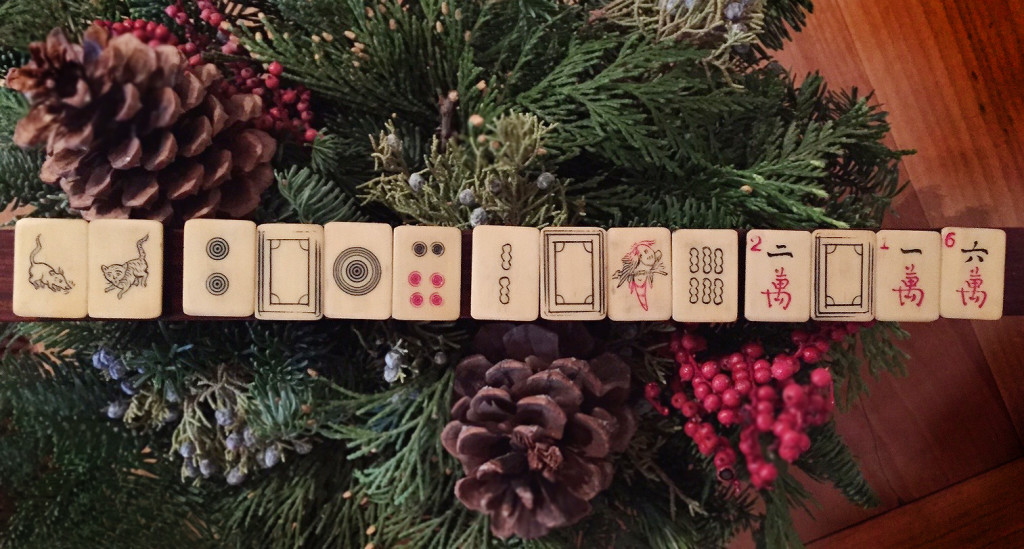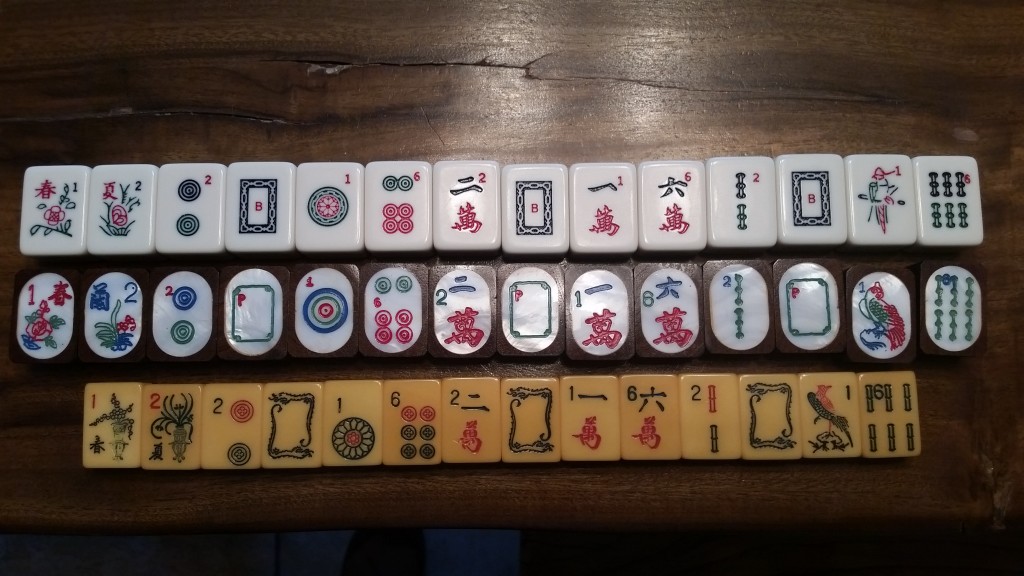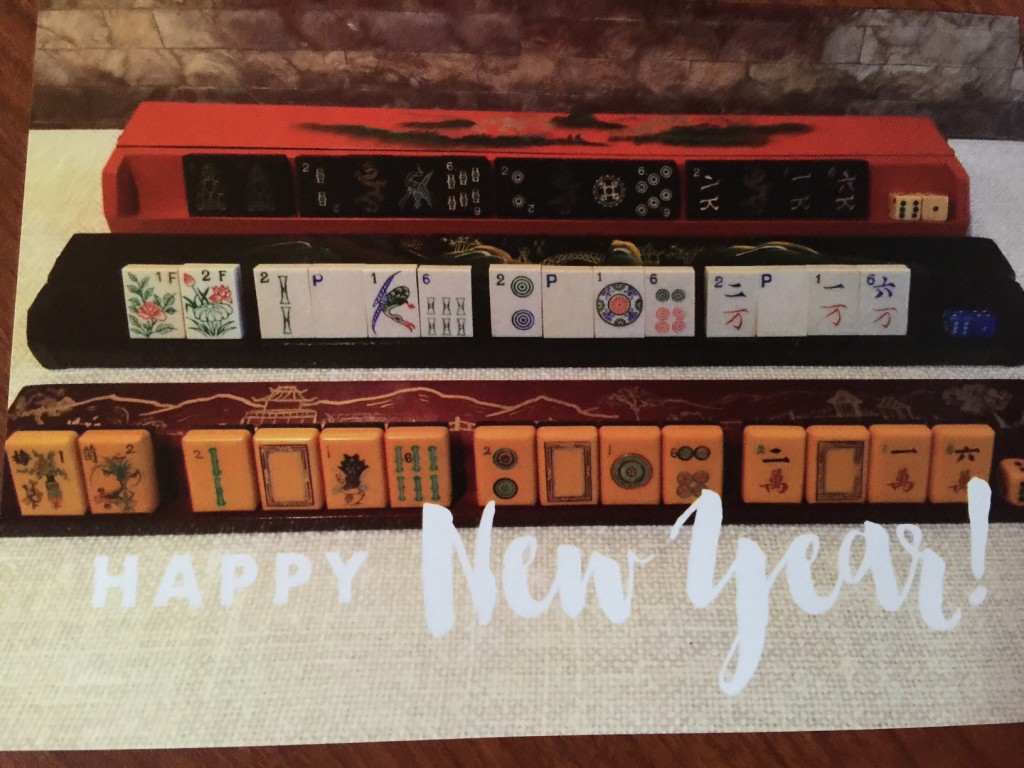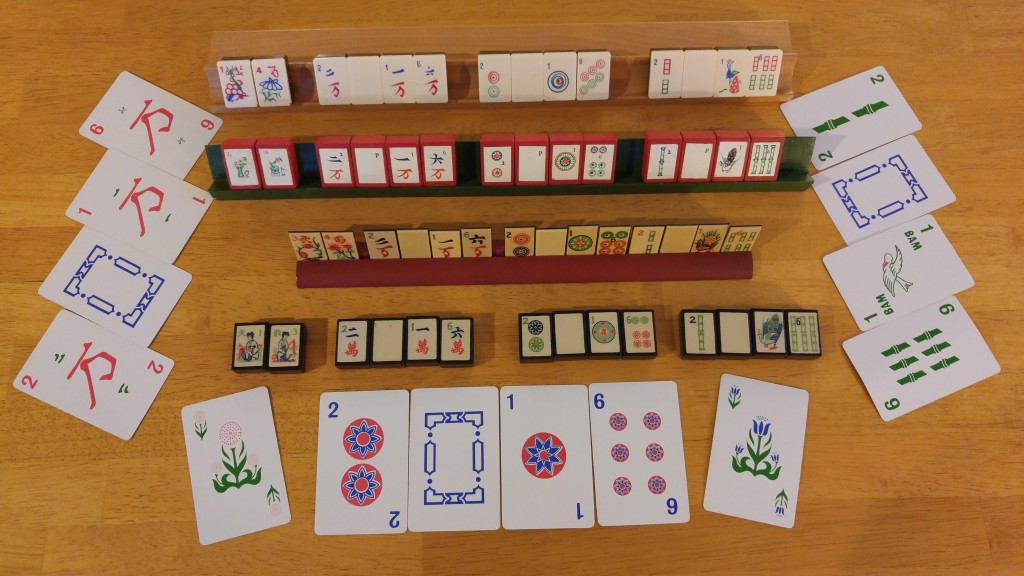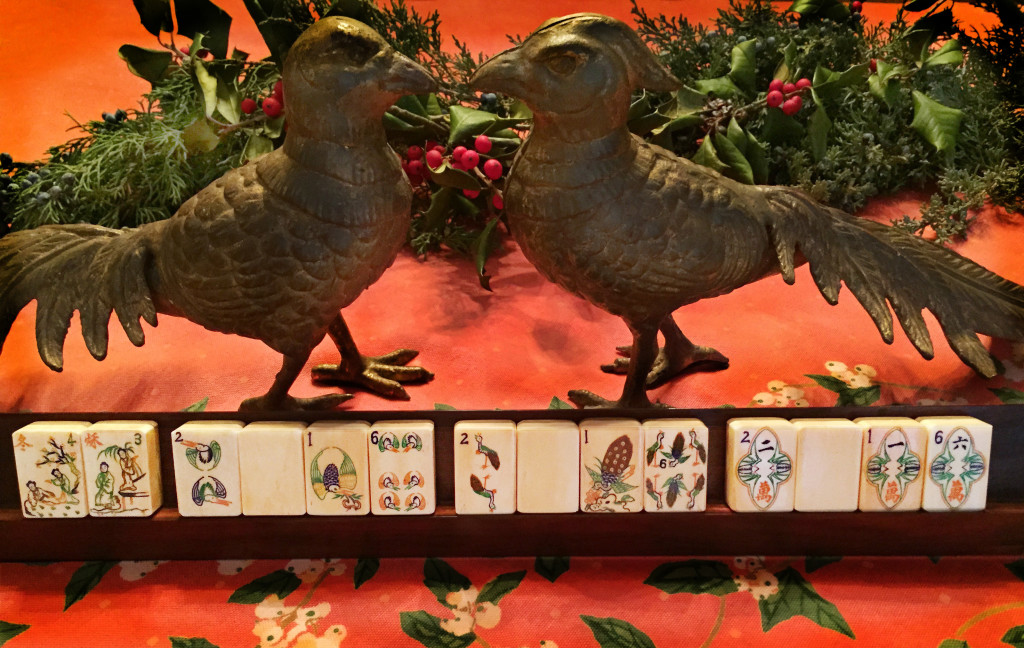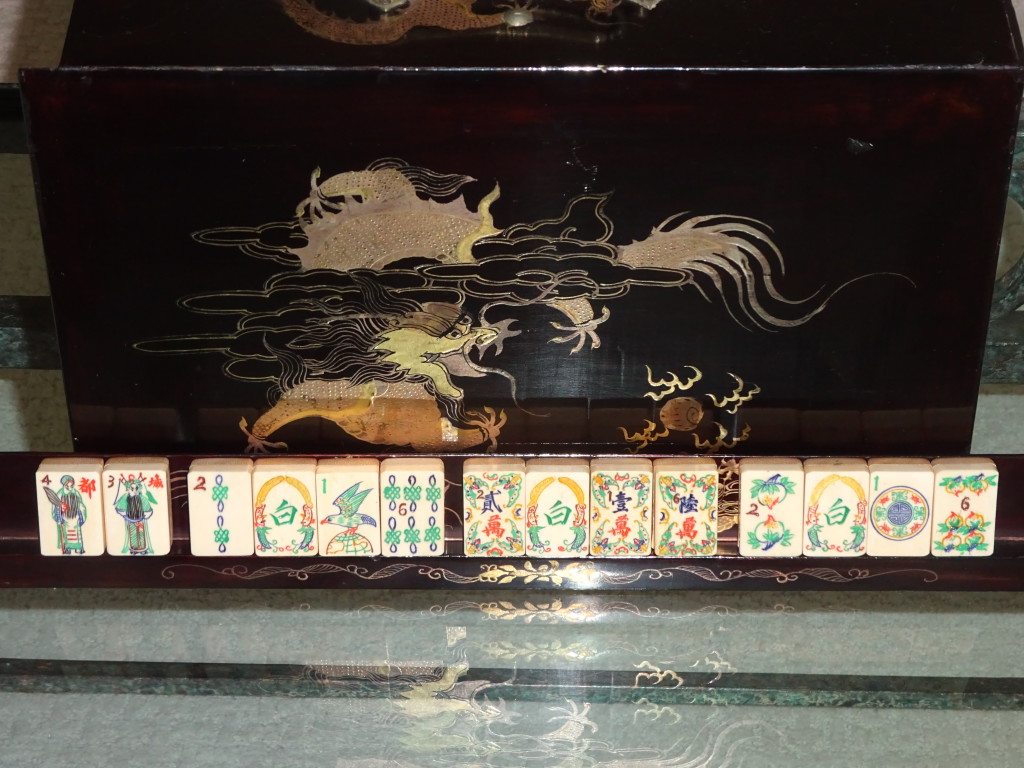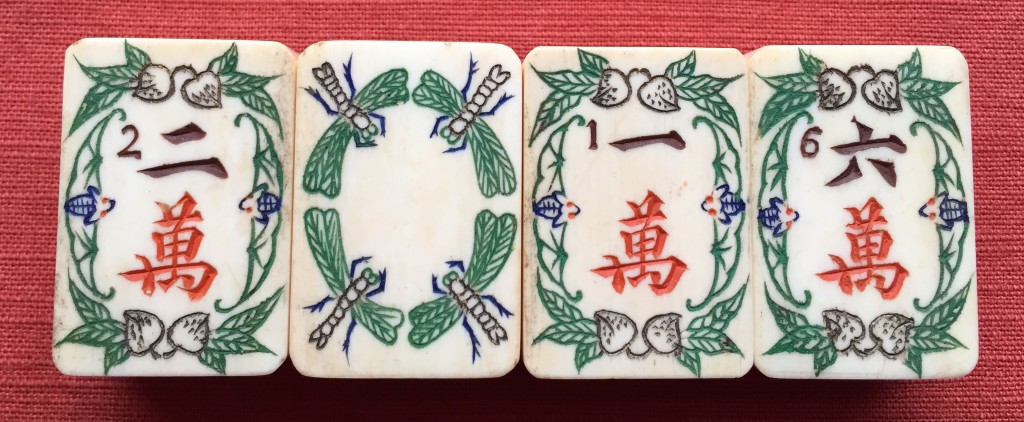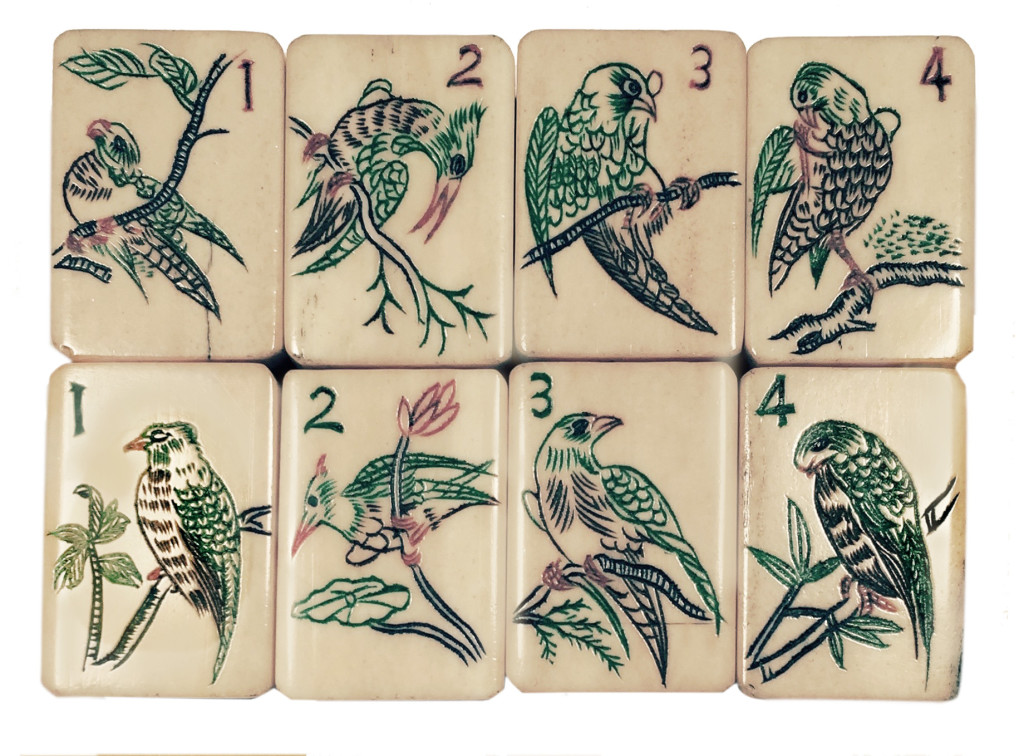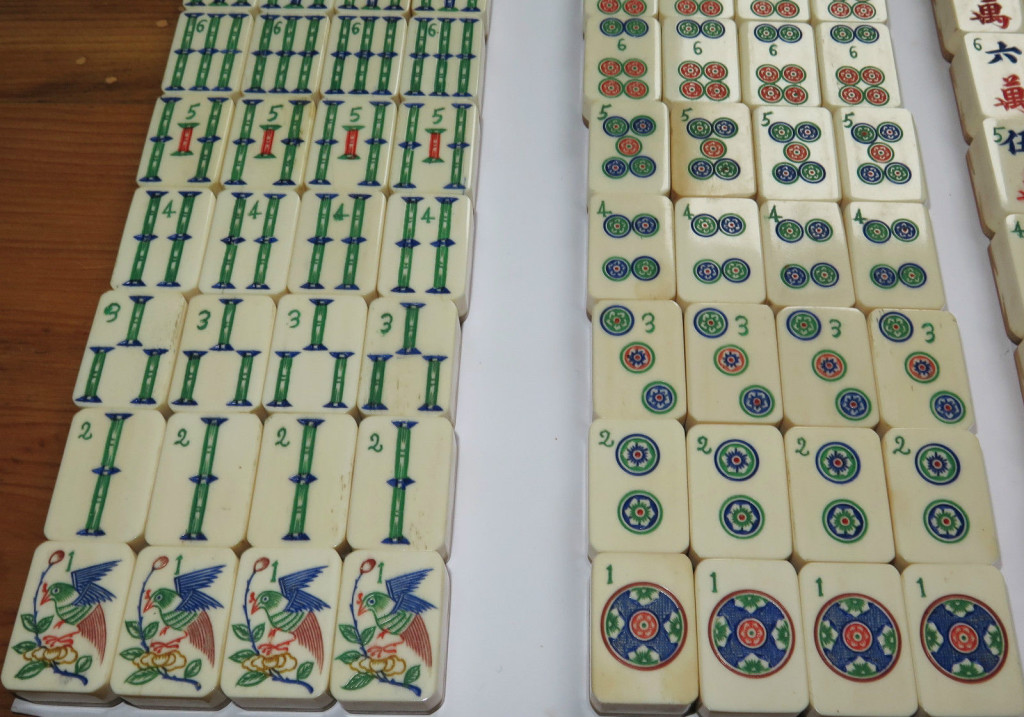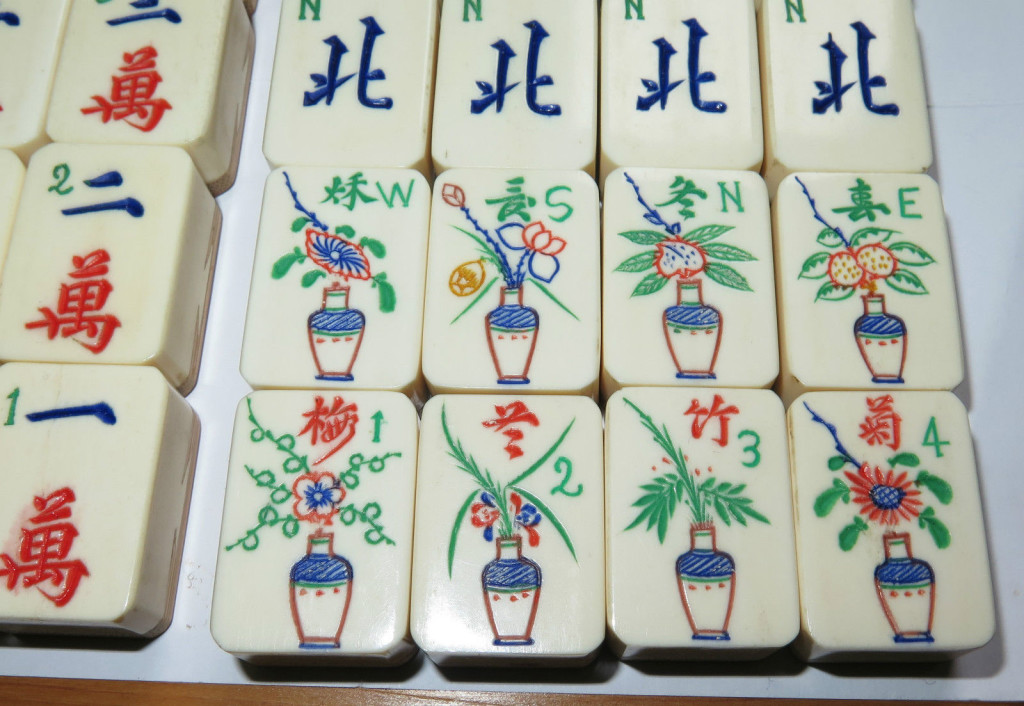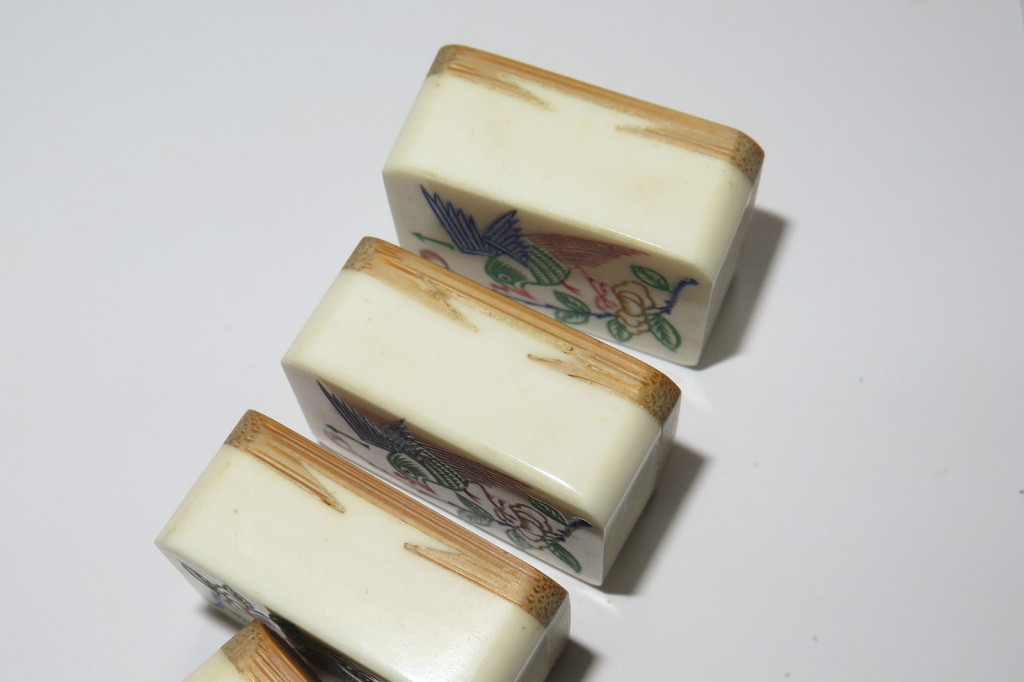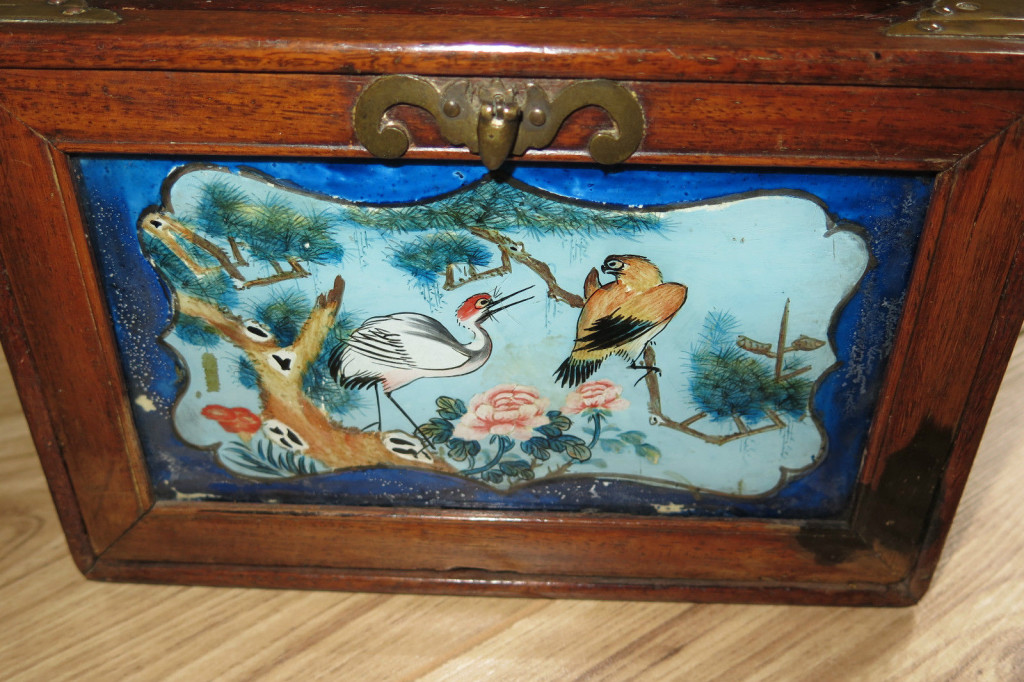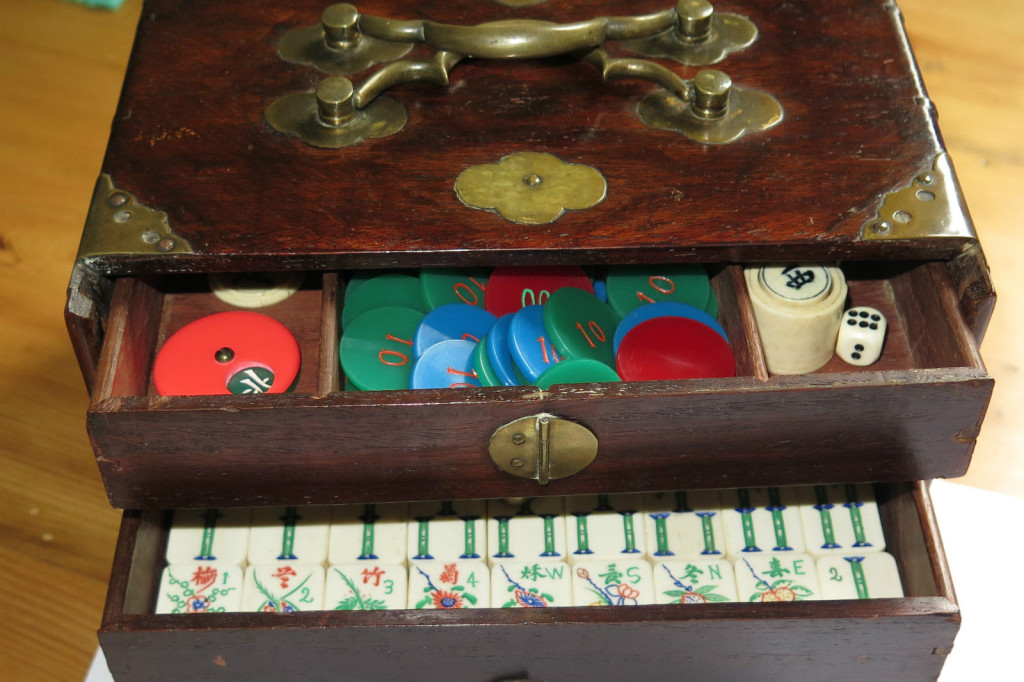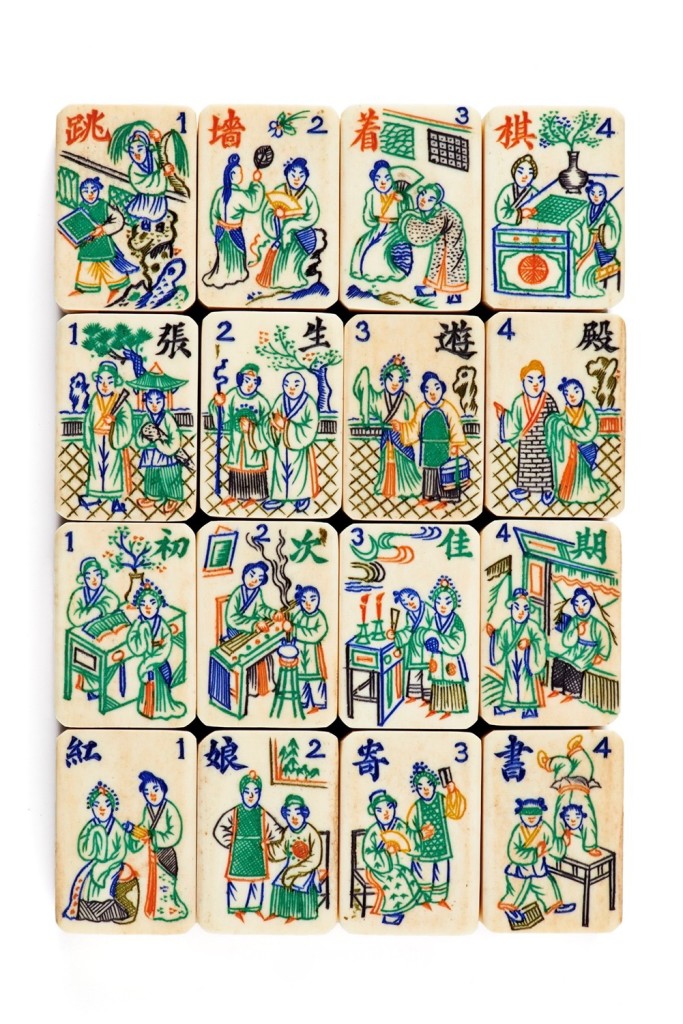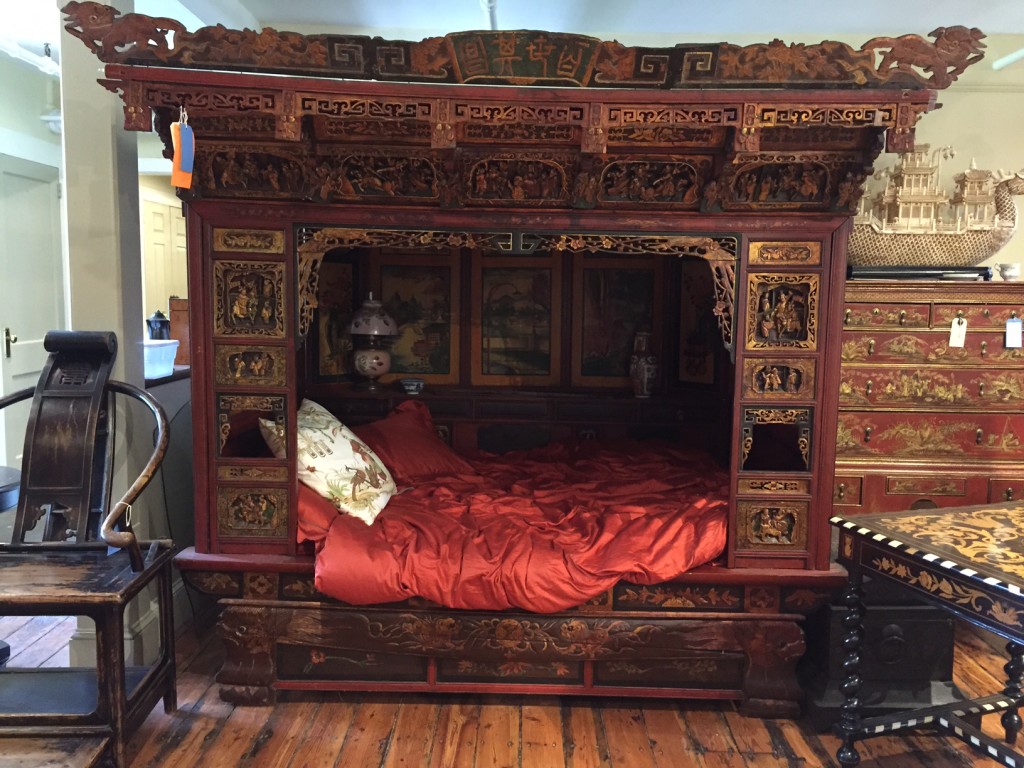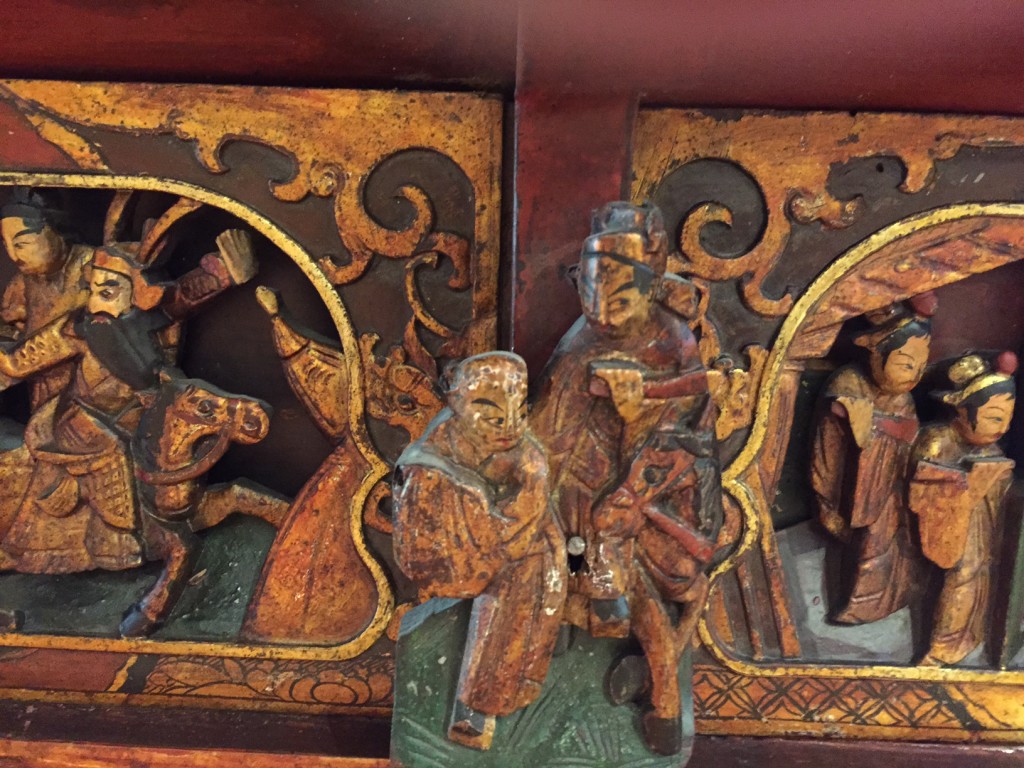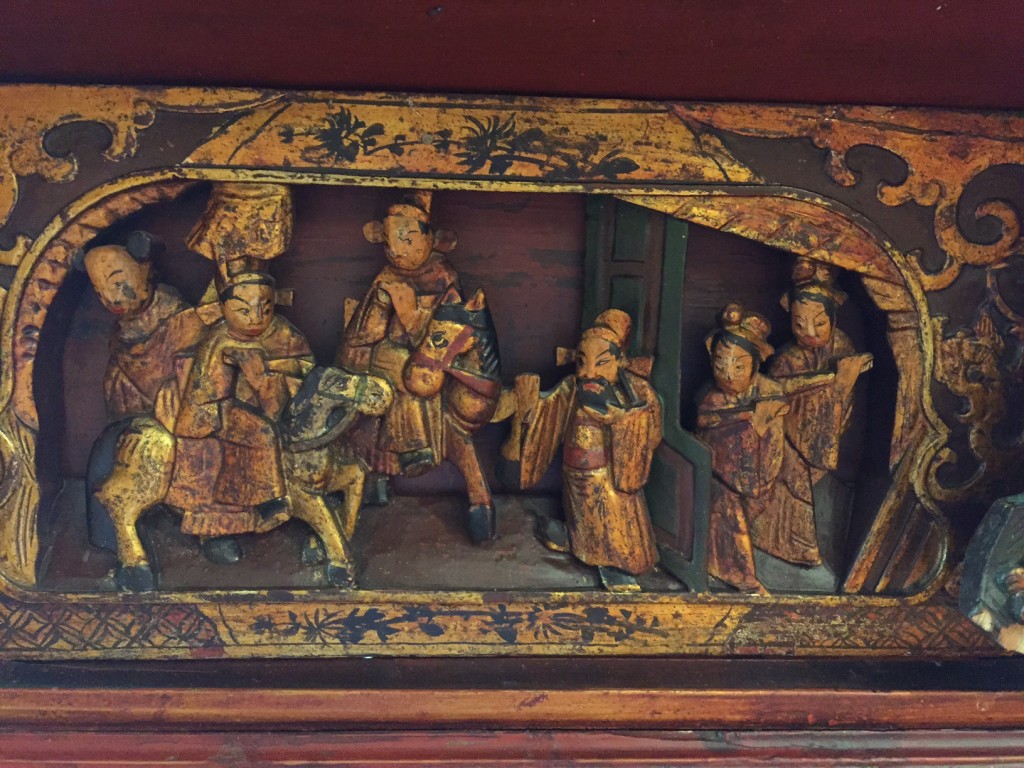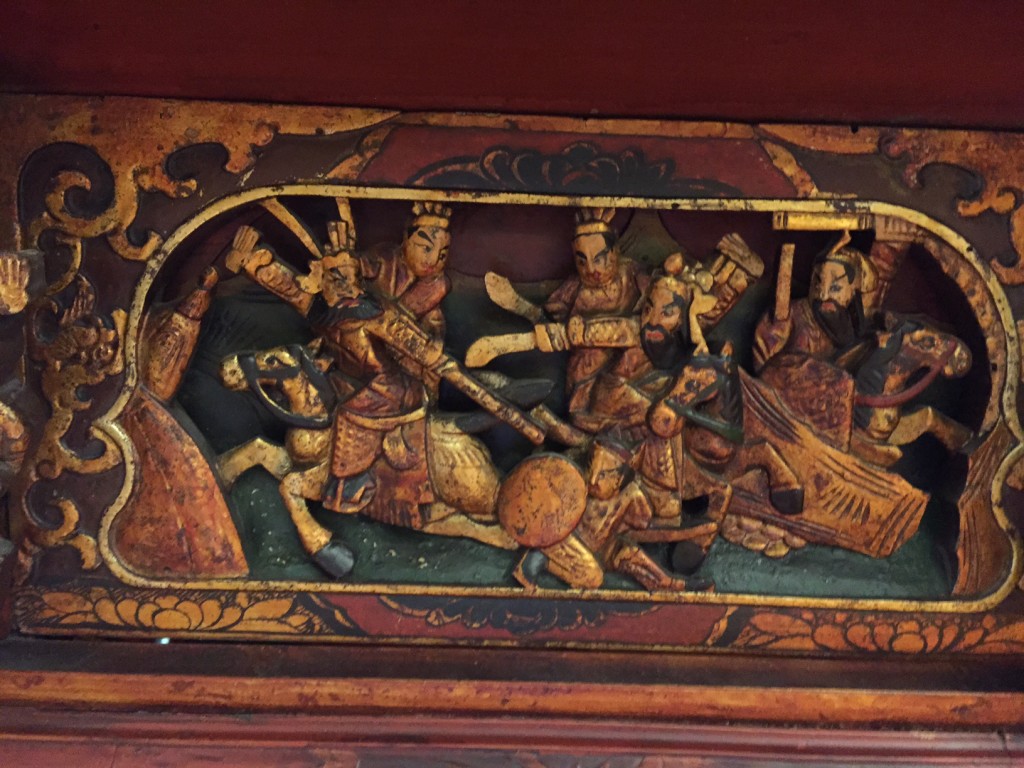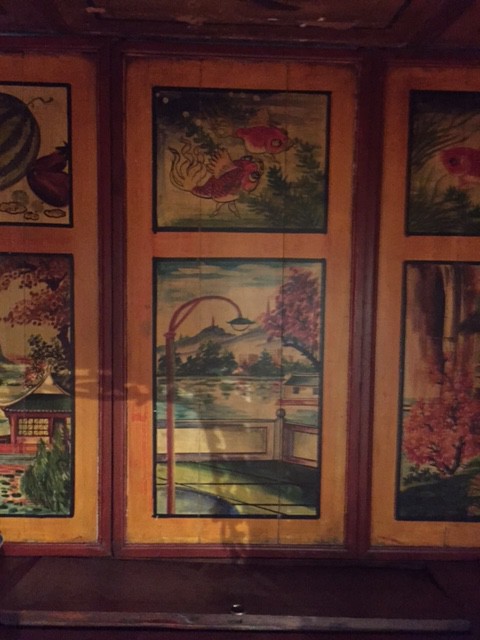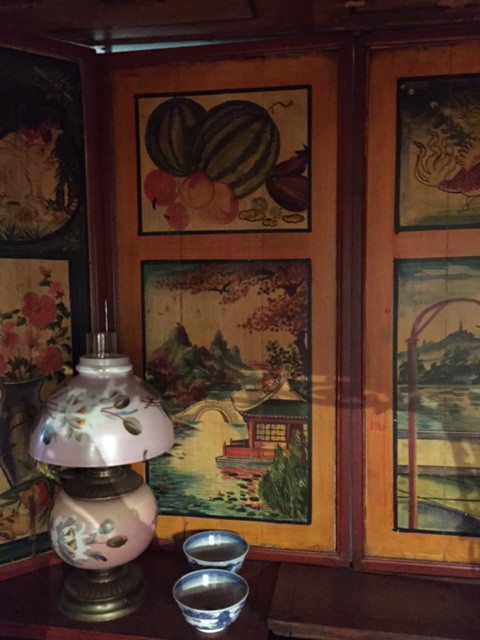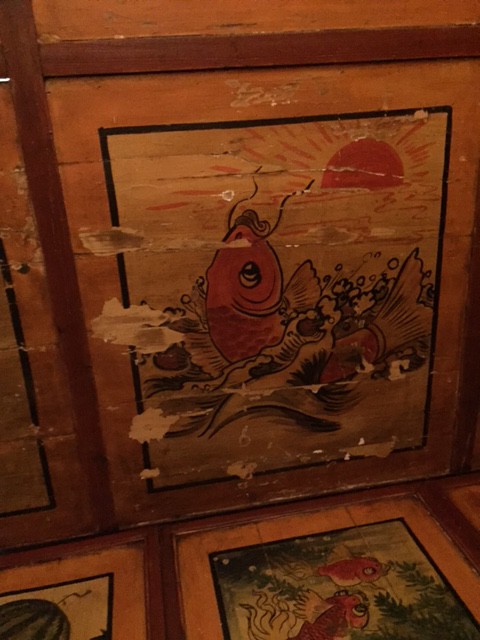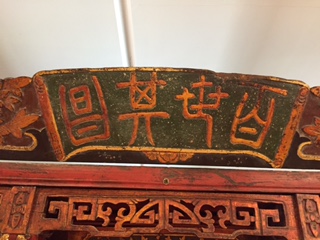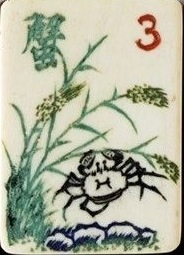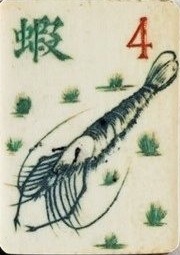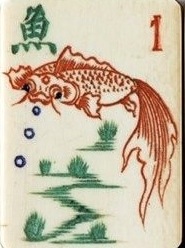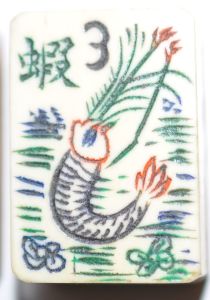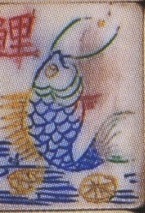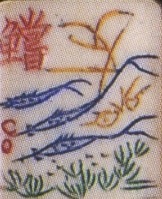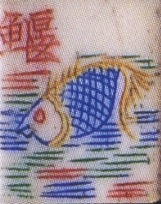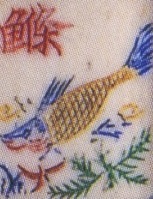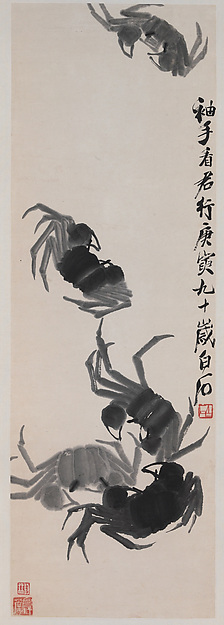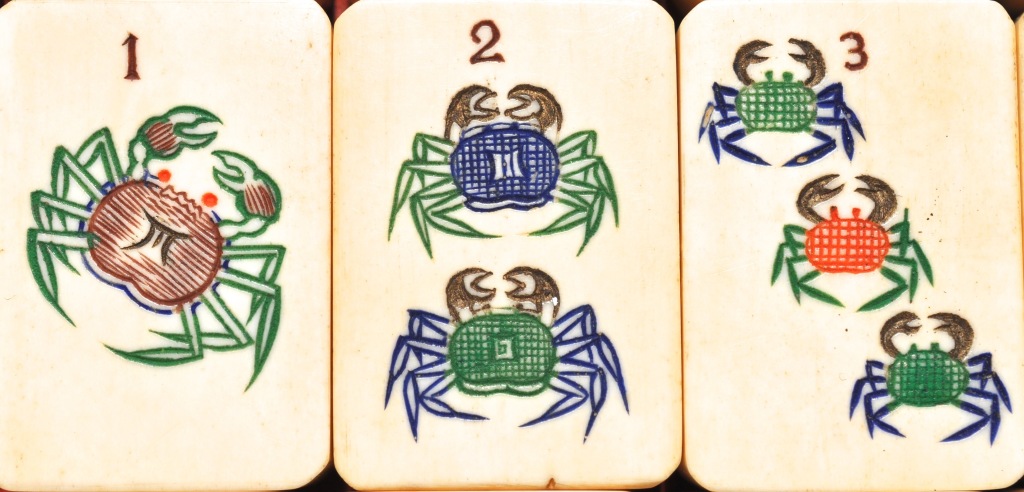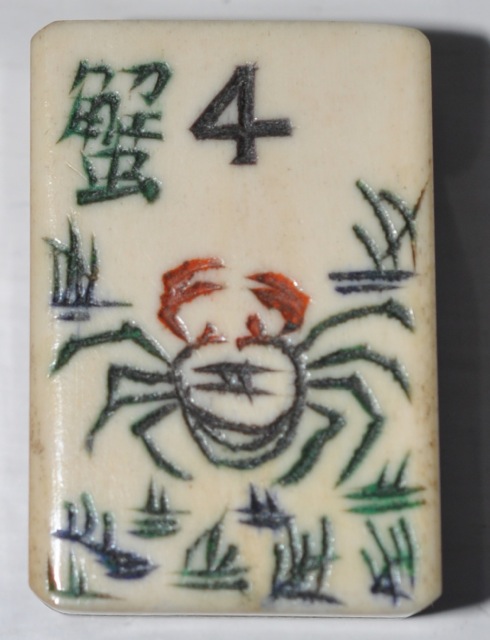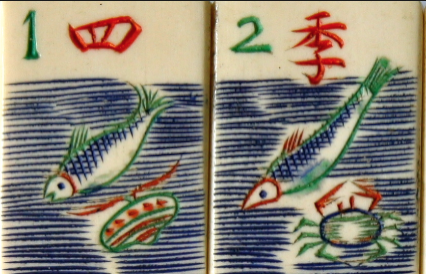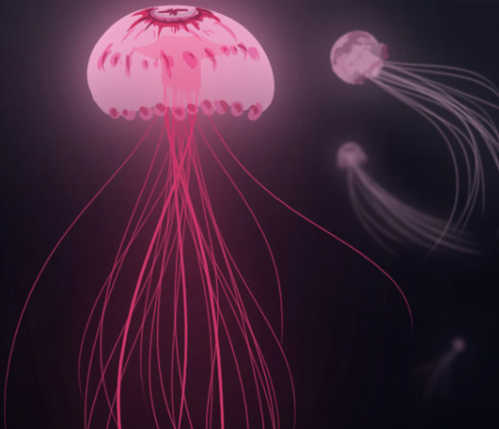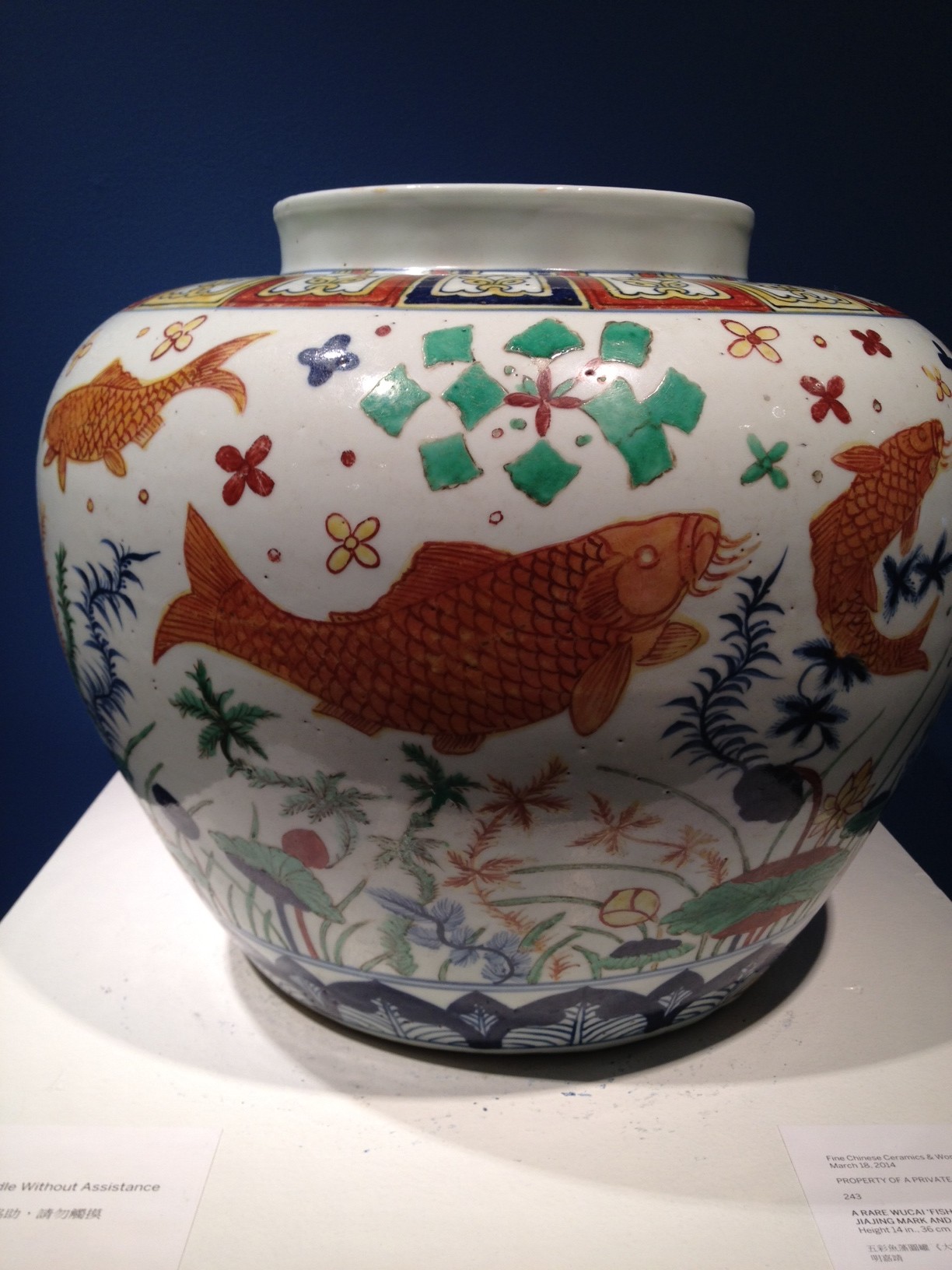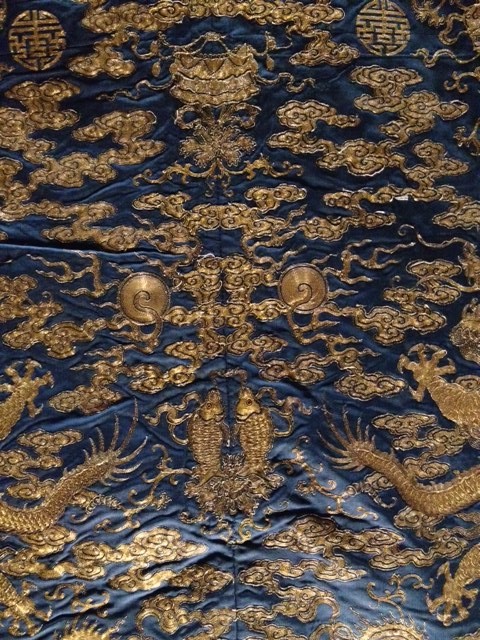This darling monkey is one of the 12 signs found on a set of charming Mahjong racks made in Asia. The small pieces of bone are inserted into the wood rack and the wood is painted black.
And above are tiles sitting on that rack with the year 2016, led off by a Flower with an image of the Monkey King, Sun Wukong, a beloved character in Chinese stories. He is a major player in the novel Journey to the West. The Monkey King often appears on Chinese Bakelite tiles; this is the only set I have seen (that I can remember, anyway!) with this character on bone and bamboo tiles.
Sun Wukong frequently appears in Chinese operas, as you can see below, in a photo taken from Wikipedia.
I went to a Chinese New Year luncheon the other day, and I was just the lucky winner of Neil Somerville's Your Chinese Horoscope 2016, subtitled: What the Year of the Monkey holds in store for you.
Here is some of what he has to say:
..."throughout the year world leaders will frequently confer and in some cases put past animosities behind them and forge new alliances. ..The United States celebrated the start of its nationhood in 1776, a previous year of the Fire Monkey, and in this one, much attention will be focused on the Presidential election. There will be great debate over the direction of domestic and foreign policy as well as increasing focus on American identity, and the campaign will be passionately fought, with some issues proving divisive and sometimes even causing rifts between party supporters."
Well, I won't do any more excerpts, but he certainly has a lot of this right, at least as far as the current political situation in the States is concerned.
I thought it fun to add this photo of monkeys from the 1920s, I believe, at the mahjong table. I highly doubt they played the game, but they probably enjoyed the tiles. In this Year of the Monkey, let's hope for some good times around the mahjong table, playing a game rich with possibilities, strategy and luck, intersperced with great merriment and camaraderie.
Fox Sunshine Comedies produced a short showing chimpanzees playing the game, with a photo featured in Photoplay magazine.
Thought you might laugh about the background I picked for the "photoshoot." I found something red, a good luck color. And yes, the book was upside down, but doesn't this look like a monkey?
And if any of you want to read about the Monkey King, here is the article in Wikipedia:

